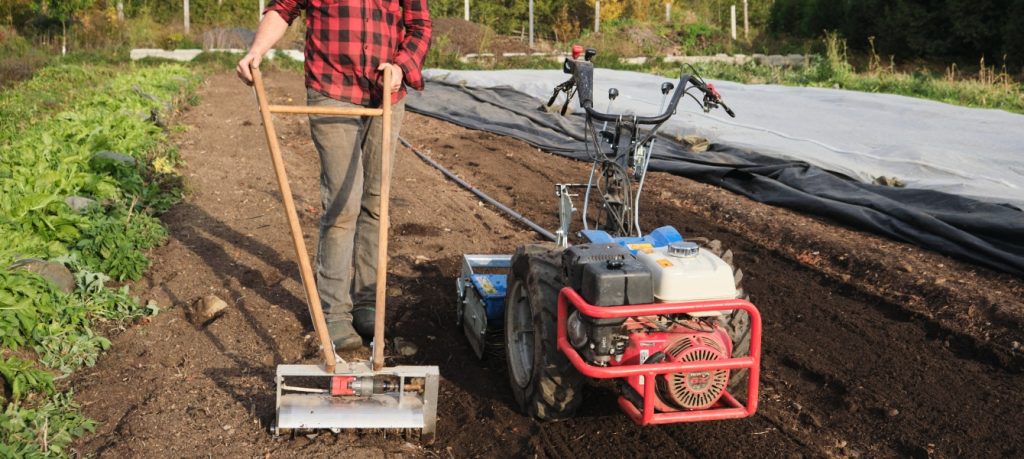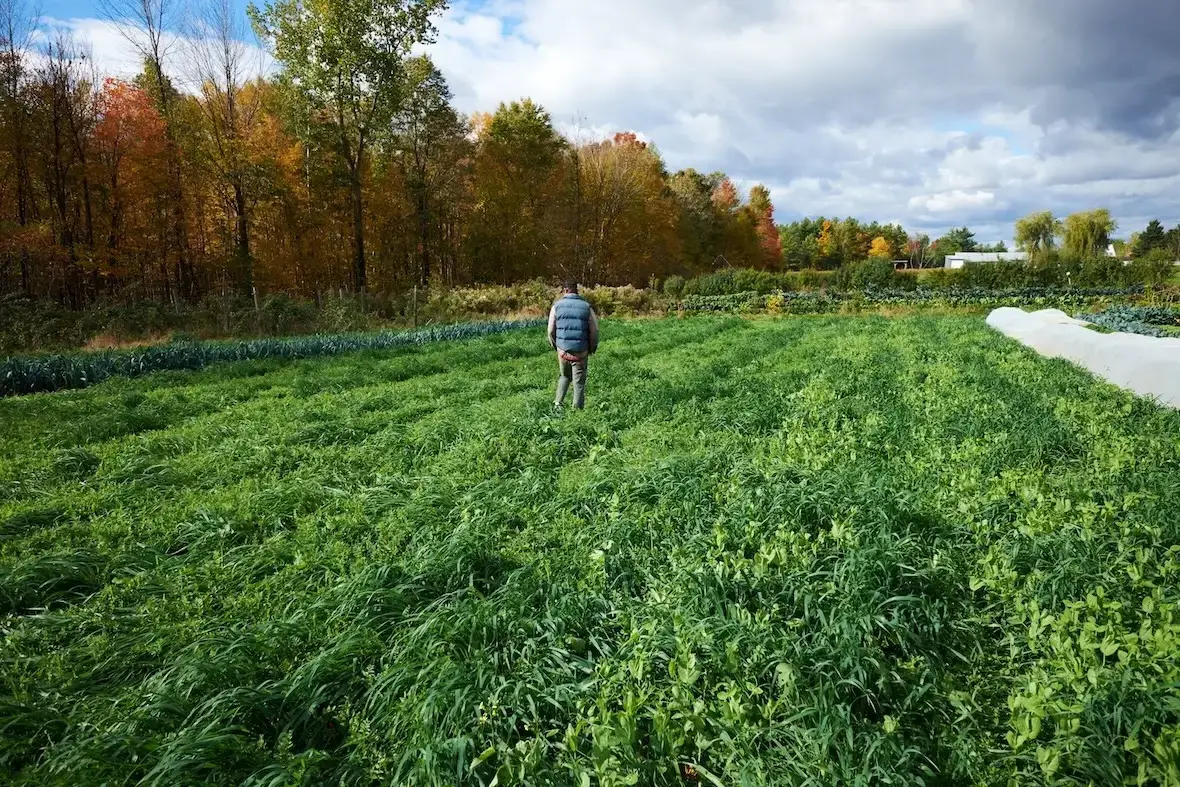Some of the most common tool-related questions that we hear from small-scale beginning farmers are: should I buy a tilther or a power harrow? Which one is more efficient?
Unfortunately, there is no clear-cut answer, as each one has its own unique functions. Depending on your context and your soil, both tools have pros and cons that are worth consideration. Therefore, your choice to buy a tilther or a power harrow will depend on your needs and what you want to achieve on your farm.
What Is the Tilther?
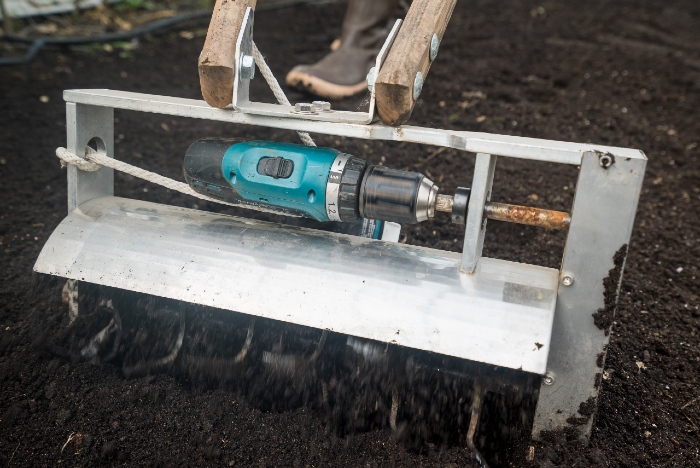
The tilther is a lightweight battery-powered tiller designed to work the top two inches of a bed. It is mostly used to incorporate compost and break up small crop residues, in order to provide the final touch in establishing a uniform seedbed. It should not be used on compacted soil or to break ground.
What Is the Purpose of the Tilther?
This clever tool was conceptualized by organic farm pioneer, Eliot Coleman. At the time, he was looking for a way to efficiently incorporate amendments (like compost) into the soil without having to use heavy machinery. Thanks to a partnership with Johnny’s Selected Seeds, the tilther was born and since then, thousands of growers have been able to benefit from it!
When to Use a Tilther?
Given its size and lightness, this drill-powered tool is easy to maneuver on smaller surfaces that a BCS walking tractor cannot as easily accommodate. Therefore, the tilther is particularly helpful when it comes to preparing beds in tunnels and greenhouses, and also saves a lot of time!
Plus, once your beds are prepared, it is very helpful for succession planting. For example, once you’ve harvested all of the lettuce from an existing bed, just pull out any large clumps of plant residue, apply fertilizer and then pass over the bed with the tilther – it’s as simple as that – you’ll be ready to plant all over again!
Small-scale growers should consider adding the tilther to their tool shed. If your field consists of 50 foot beds, you don’t necessarily need a tractor. Simpler machinery and hand tools might take a bit more time to use, but they’ll do the trick.
However, if your beds are more than 50 feet long, you will definitely need machinery that will allow you to move faster – otherwise you’re going to waste too much time walking back and forth, since you need to use the tilther on both sides of a bed to prepare it! This is where the power harrow becomes handy…..
What Is the Power Harrow?
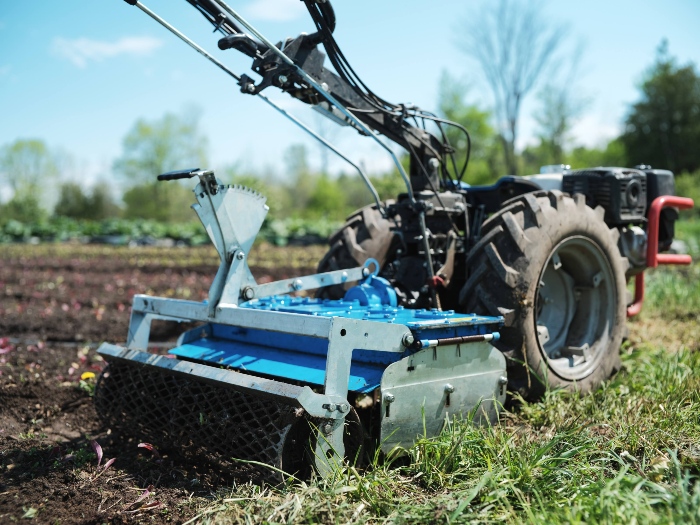
The power harrow is a 30 in wide attachment used to prepare uniform seedbeds. It is mounted on a walking tractor and replaces the rear tiller that usually comes equipped on walking tractors.
The power harrow has multiple sets of tines that rotate on vertical axes for complete horizontal tilling of the soil. It works the soil by stirring it instead of mixing, like a rototiller would typically do. The result preserves the soil structure and does not impose any vertical compression to the soil.
It is equipped with a steel mesh-roller in the rear that perfectly levels and pre-tamps the soil for good seed-to-soil contact. If you want to focus your cultivation to just the top few inches of the bed, you can easily and quickly adjust the working depth of the tines. As our farm favors minimum tillage techniques, this feature is important for us since it allows us to work the soil no more than 2 inches deep, which preserves the natural soil profile.
When to Choose the Power Harrow Over a Tilther?
Due to the size restrictions of being driven by a walking tractor, the power harrow is not ideal to use within tunnels or greenhouses. It could also be a bit overkill on a micro or urban farming system that uses beds 50 feet long or shorter. But, if you have a larger-scale farm, using a tilther may be time-consuming, so a tool with a higher operating speed may be more effective. If you want to prepare 5+ 100 feet-long beds every week, we recommend using the power harrow, as you will only have to pass the tool one time on a bed for adequate preparation.
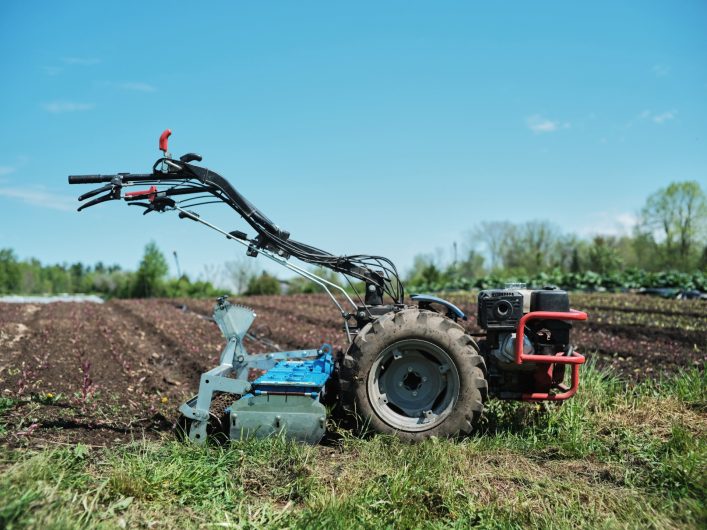
Compared to the tilther, though the cost is significantly higher for a power harrow, it can drastically improve the levels of productivity and efficiency on your farm. Remember: every minute spent on your business is worth solid gold, so be sure to manage your time wisely. Whether or not you should buy a tilther or a power harrow depends on your setup on your farm.
Want to explore more equipment options for your small farm? Take a look at our yearly roundup of 30 must-have small farm equipment.






